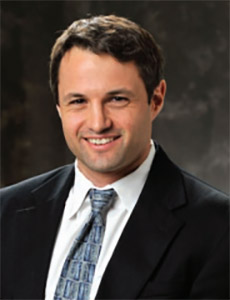Join the CALCE/SMTA Counterfeit Parts and Materials Symposium 2022 for this and other informative presentations
Jeremy Muldavin
Abstract: The foundry is uniquely suited to provide rich Provenance of the design and manufacturing data that can be linked to a strong certificate along with measurable features of the electronic part as it moves through the supply chain and into operation. The foundry is granted trust in receiving all design information necessary to create the physical article (chip) and can serve a key role in identifying source IP for a part, ensuring IP compliance, deterring IP theft, and preventing the fabrication of parts using stolen designs. Foundries can also provide data that increases the confidence that there is no overproduction of the physical parts that could result in grey market parts or theft. Rich provenance created during manufacturing can increase the confidence in the integrity of reproduction of the design intent into the physical part and its operability over the lifetime of the part. The data related to the quality and integrity of the part could enable valuation of the performance and lifetime reliability of the parts. To create greater confidence in the unique authenticity of individual die after they are released from the wafer and inserted into packages, assemblies, and systems, the foundry can enable unique markings and features tied uniquely to the manufacturing processes and variability during its birth. These are key concerns for distributors, integrators, and the end-use industries and consumers. This topic will introduce monitors, data elements, metrics, and validation at the fab and at the package assembly and test operations. It will also discuss the way this information can be linked to a combination of query-able markers that could provide unique identification, such that validation of provenance and pedigree is achievable, with a strong Physical Root of Trust, and immutable traceability throughout the supply chain can be assured, while protecting proprietary information.
 Bio: Jeremy Muldavin received his BSE in Engineering Physics from the University of Michigan in 1995 where he performed research in the area of high energy spin physics. He went on to receive his MSE and Ph.D. (2001) in Electrical Engineering with a major in Electromagnetics and a minor in Communications. His graduate research focused on micro-machined circuits and devices for RF and millimeter-wave circuit and antenna applications. He is currently an Assistant Group Leader of the Advanced Silicon Technology Group at MIT Lincoln Laboratory where he has continued his interest in RF micro-electro-mechanical-systems (MEMS) design, fabrication, and modeling as well as 3D integrated circuits, advanced read-out integrated circuits (ROIC), and flexible electronics. Dr. Muldavin has served for 9 years on the IEEE Radio & Wireless Symposium Steering Committee, for four years as a chair of the IEEE MTT-S Boston Section, and served as the Registration Chair for the 2009 IEEE International Microwave Symposium.
Bio: Jeremy Muldavin received his BSE in Engineering Physics from the University of Michigan in 1995 where he performed research in the area of high energy spin physics. He went on to receive his MSE and Ph.D. (2001) in Electrical Engineering with a major in Electromagnetics and a minor in Communications. His graduate research focused on micro-machined circuits and devices for RF and millimeter-wave circuit and antenna applications. He is currently an Assistant Group Leader of the Advanced Silicon Technology Group at MIT Lincoln Laboratory where he has continued his interest in RF micro-electro-mechanical-systems (MEMS) design, fabrication, and modeling as well as 3D integrated circuits, advanced read-out integrated circuits (ROIC), and flexible electronics. Dr. Muldavin has served for 9 years on the IEEE Radio & Wireless Symposium Steering Committee, for four years as a chair of the IEEE MTT-S Boston Section, and served as the Registration Chair for the 2009 IEEE International Microwave Symposium.
Register NowSymposium on Counterfeit Parts and Materials 2022
Top